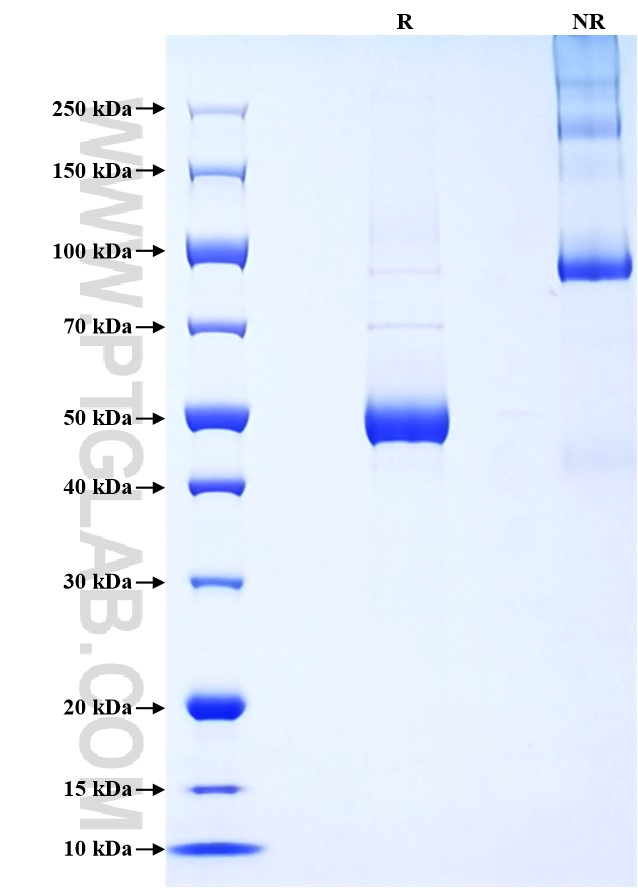Recombinant human GPR56 protein (rFc Tag)
种属
Human
纯度
>90 %, SDS-PAGE
标签
C-rFc
生物活性
未测试
验证数据展示
产品信息
| 纯度 | >90 %, SDS-PAGE |
| 内毒素 | <0.1 EU/μg protein, LAL method |
| 生物活性 | Not tested |
| 来源 | HEK293-derived Human GPR56 protein Arg26-Asn171 (Accession# Q9Y653-1) with a rabbit IgG Fc tag at the C-terminus |
| 基因ID | 9289 |
| 蛋白编号 | Q9Y653-1 |
| 预测分子量 | 42.7 kDa |
| SDS-PAGE | 45-55 kDa, reducing (R) condition |
| 组分 | Lyophilized from 0.22 μm filtered solution in PBS, pH 7.4. Normally 5% trehalose and 5% mannitol are added as protectants before lyophilization. |
| 复溶 | Briefly centrifuge the tube before opening. Reconstitute at 0.1-0.5 mg/mL in sterile water. |
| 储存条件 |
It is recommended that the protein be aliquoted for optimal storage. Avoid repeated freeze-thaw cycles.
|
| 运输条件 | The product is shipped at ambient temperature. Upon receipt, store it immediately at the recommended temperature. |
背景信息
GPR56 belongs to the adhesion family of G protein-coupled receptors (GPRs), is a receptor involved in cell adhesion and probably in cell-cell interactions, and mediates cell matrix adhesion in developing neurons and hematopoietic stem cells. GPR56 binding to the COL3A1 ligand inhibits neuronal migration and activates the RhoA pathway by coupling to GNA13 and possibly GNA12. GPR56 Plays a critical role in cancer progression by inhibiting VEGFA production thereby inhibiting angiogenesis through a signaling pathway mediated by PRKCA.
参考文献:
1. Rong Luo, et al. (2012) PLoS One. 7(1):e29818. 2. Lei Xu, et al. (2006) Proc Natl Acad Sci U S A. 103(24):9023-8. 3. Liquan Yang, et al. (2011) Cancer Res. 71(16):5558-68.
